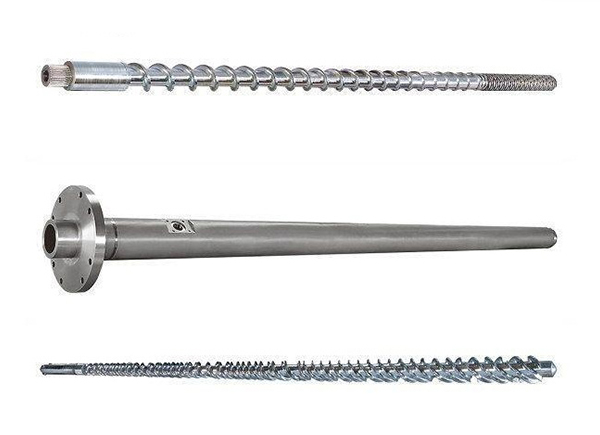+86-0580-8052088
+86-13505800981
No. 20, Liguan Road, Jintang Town, Dinghai District, Zhoushan, Zhejiang, China
Injection molding machine screw? How to choose the righ […]
Injection molding machine screw? How to choose the right screw is a big plastic manufacturer's problem! Then I'll give you an analysis of the importance of screw and material function! It is the "screw plasticizing component" of the injection molding machine. It is the primary central unit of the injection molding machine, which can directly show the function of the injection molding machine. It's like a human heart! When the heart is not good, of course, people's health is not good! The same is true of injection molding machine. If the heart is not good, it will lead to some obvious abnormal problems repeatedly, resulting in the product can not achieve the desired effect and quality. The screw, known as "heart", is of course a crucial part, and its function determines the quality of the processed products.
The plasticizing screw of injection molding machine has the effect of conveying, melting, mixing, tightening, metering and exhaust. It plays an important role in the plasticizing quality and is an important factor affecting the plasticizing quality.
The screw has several critical parameters that affect the plasticizing quality. Generally, the screw of injection molding machine is selected according to the following criteria:
1. Screw diameter (d)
a. The injection volume was 1 / 4 * π * D2 * s (injection stroke) * 0.85;
b. Generally speaking, the screw diameter D is inversely proportional to the maximum injection pressure and is directly proportional to the plasticizing skill.
2、 Transport section
a. As the delivery, pushing and preheating of plastics, the preheating should be ensured to the melting point;
b. Crystalline plastics should be long (such as POM, PA), followed by amorphous materials (such as PS, PU, ABS), and the shortest thermal sensitivity (such as PVC).
3. Tight section
a. As the mixing, tightening and pressurized exhaust of plastics, the materials after this section have almost melted, but not necessarily evenly mixed;
b. In this region, the plastic melts gradually, and the volume of the screw groove must be decreased accordingly to correspond to the decrease of the plastic volume, otherwise the material pressure is not solid, the heat transfer is slow and the exhaust is poor;
c. Generally, it accounts for more than 25% of the working length of the screw, but the tightening section of the nylon (crystalline material) screw accounts for about 15% of the working length of the screw. The plastic screw with high viscosity, fire resistance, low conductivity and high additives accounts for 40% '50% of the working length of the screw, and the PVC screw can account for 100% of the working length of the screw, so as to avoid the occurrence of severe shear heat.
4. Metering section
a. Generally, it accounts for 20'25% of the working length of the screw to ensure that all the plastics are melted, the temperature is uniform and the mixing is even;
b. The longer the metering section is, the better the mixing results will be; if the metering section is too long, the melt will be easy to decompose due to staying too long; if it is too short, the temperature will be uneven;
c. PVC and other thermosensitive plastics should not stay too long to avoid thermal decomposition. Shorter metering section or no metering section can be used.
5. Feed screw groove depth, metering screw groove depth
a. The deeper the screw groove depth is, the greater the conveying capacity is. However, the shallower the metering screw groove depth is, the higher the plasticizing fever and mixing function index are. However, if the metering screw groove depth is too shallow, shear heat is added, and self generated heat is added. If the temperature rise is too high, plastic discoloration or scorching will be formed, especially for thermosensitive plastics;
b. When the depth of metering screw groove = Kd = (0.03'0.07) * D, if D increases, the smaller value of K is selected.
https://www.txscrew.com/

Copyright:Zhoushan Tianxiang Screw Factory
China Conical Twin Screws ManufacturersTechnical Support: HWAQ